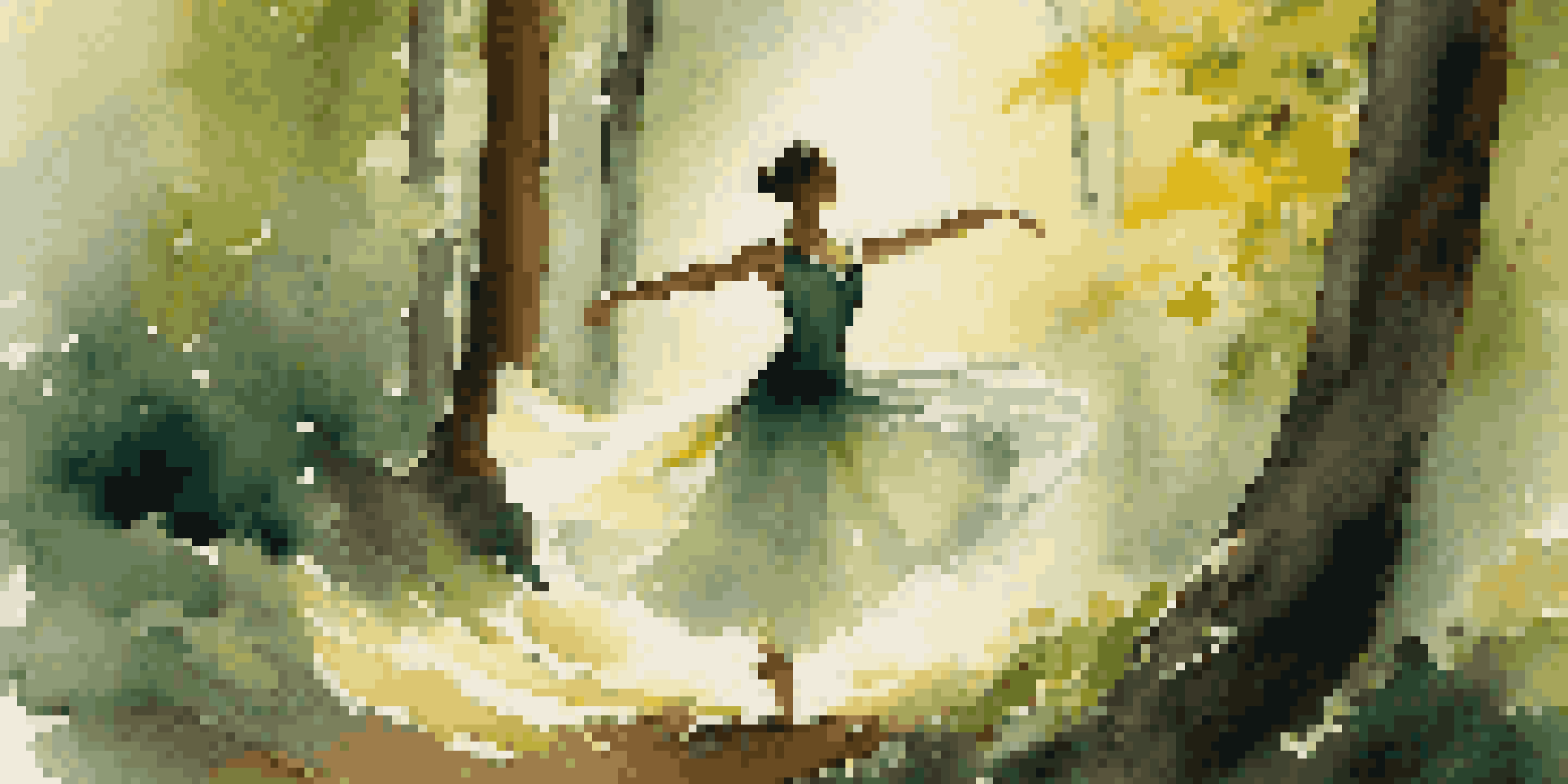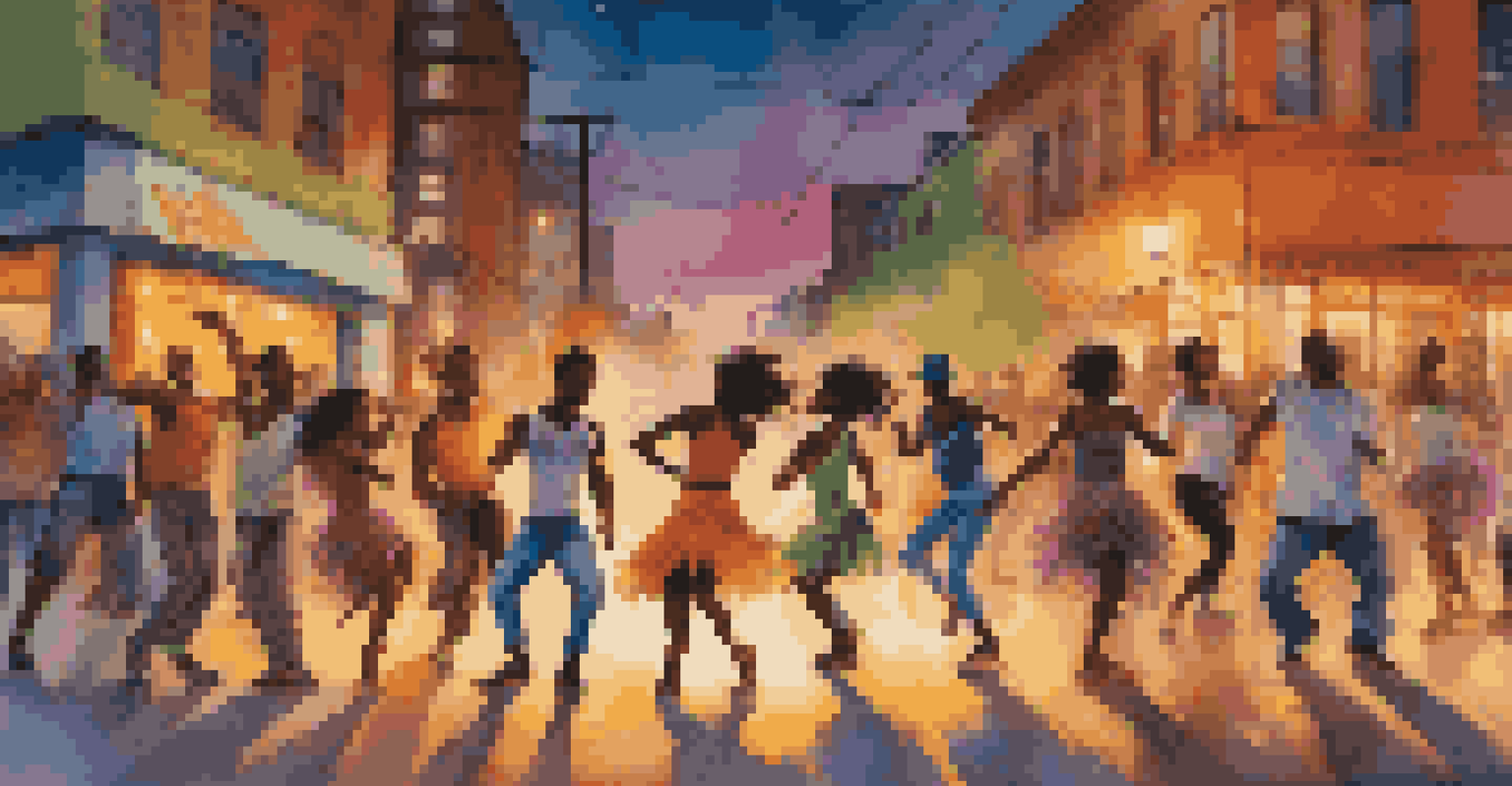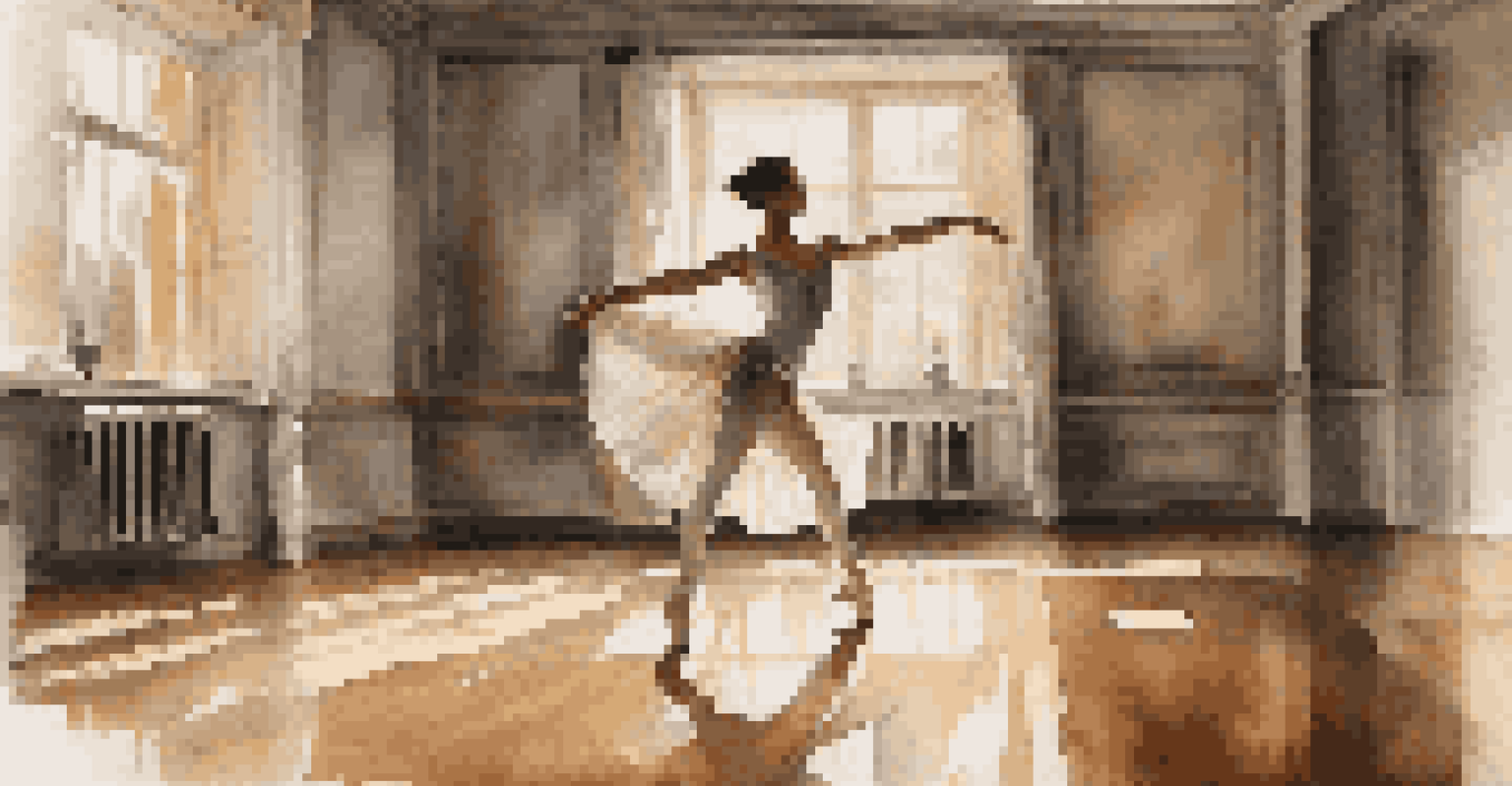Dance and Memory: Reflections in 20th Century Literature

The Interplay of Dance and Memory in Literature
Dance and memory share a profound connection in literature, serving as metaphors for the past and the fleeting nature of time. In many 20th-century works, authors use dance to symbolize the act of remembering, illustrating how movement can evoke memories. Just as a dancer's body recalls choreography, characters often revisit past experiences through the act of remembering.
Dance is the hidden language of the soul.
Literary figures like Virginia Woolf and Gabriel Garcia Marquez have intricately woven dance into their narratives, showcasing how physical movement can trigger emotional recollections. For instance, in Woolf's 'To the Lighthouse,' the fluidity of movement parallels the characters' inner thoughts, creating a tapestry of memory that enriches the narrative. This connection invites readers to consider how their own memories shape their identities.
As readers, we are drawn into these moments where dance becomes a catalyst for reflection, urging us to contemplate our own experiences. The act of remembering, much like dance, is often spontaneous and layered, revealing the complexities of human emotion. Through this lens, literature not only tells stories but also explores the very essence of memory itself.
Symbolism of Dance in Modernist Literature
In modernist literature, dance frequently symbolizes the chaos and fragmentation of memory. Authors like T.S. Eliot and James Joyce utilize dance as a motif to reflect the disjointed nature of human experience, mirroring the tumultuous dance of life itself. For example, in 'The Waste Land,' Eliot’s references to dance convey a sense of lost vitality, suggesting how memories can be both vibrant and haunting.

Moreover, the rhythm and flow of dance often parallel the stream of consciousness technique used by modernist writers. This technique allows readers to engage with characters’ thoughts in a fluid manner, much like watching a dance unfold. The intertwining of dance and narrative structure emphasizes the non-linear nature of memory, urging readers to navigate through the complexities of human existence.
Dance Reflects Memory and Identity
In literature, dance serves as a powerful metaphor for memory, allowing characters to explore their identities and the past.
Through this symbolic representation, modernist literature challenges traditional storytelling, inviting us to experience memory as a dance—an intricate, sometimes chaotic interplay of past and present. The reflections of self and society captured in these works resonate deeply, reminding us of the fragility and beauty of our own memories.
Dance as a Reflection of Cultural Memory
Dance serves as a powerful reflection of cultural memory, often preserving traditions and collective experiences. In 20th-century literature, writers frequently explore how dance embodies the memories of communities, connecting individuals to their heritage. This cultural dimension enriches narratives by illustrating how shared experiences shape identity and resilience.
To live is to dance, to dance is to live.
Authors like Zora Neale Hurston and Toni Morrison delve into this theme, depicting dance as a means of reclaiming memory and history. In 'Their Eyes Were Watching God,' Hurston uses the motif of dance to signify freedom and self-discovery, reflecting the protagonist's journey through her own cultural landscape. This connection to cultural memory affirms the idea that dance is not merely an art form but a vital narrative that carries the weight of history.
By weaving dance into their stories, these authors underscore the importance of remembering and honoring the past. The act of dancing becomes a communal experience, allowing characters and readers alike to engage with their roots. Through this lens, literature becomes a vessel for preserving cultural memory, reminding us of the significance of our shared histories.
Physicality and Emotion in Dance Literature
The physicality of dance in literature often mirrors the emotional landscape of characters, creating a rich tapestry of human experience. Writers frequently utilize dance as a means to express feelings that words alone cannot capture. This interplay highlights how movement can convey complex emotions, making the act of remembering even more visceral.
For instance, in works like 'A Streetcar Named Desire' by Tennessee Williams, the characters' movements and interactions are laden with emotional weight, reflecting their internal struggles and desires. The dance between characters becomes a manifestation of their memories, revealing how past experiences shape their present behavior. This vivid portrayal allows readers to feel the intensity of these moments, bridging the gap between text and emotion.
Cultural Memory Through Dance
Authors like Zora Neale Hurston and Toni Morrison illustrate how dance embodies cultural memory, preserving traditions and shared experiences.
As we explore these themes, the physical act of dance invites readers to connect with their own emotions and memories. The rhythm and flow of a narrative can evoke our responses, reminding us that memory is not just a mental exercise but a deeply felt experience. In this way, literature becomes a dance of its own, inviting us to move through our memories alongside the characters.
Dance and the Passage of Time in Literature
The theme of time is intricately linked to dance, as both embody a sense of movement and transition. In literature, authors often use dance to signify the passage of time, illustrating how memories can be fleeting yet enduring. This relationship invites readers to reflect on their own experiences and the moments that define their lives.
In novels like 'One Hundred Years of Solitude' by Gabriel Garcia Marquez, the cyclical nature of time is mirrored in the dance of the characters, who navigate their legacies through generations. Each movement resonates with the weight of their histories, emphasizing how memories can echo through time. This dance of time creates a poignant reminder of life's transient beauty and the importance of cherishing each moment.
As we engage with these narratives, we are reminded that time, much like dance, is both an individual and collective experience. The interplay of past and present through dance allows for a deeper understanding of how our memories shape our identities. In literature, this exploration of time invites us to consider our own journeys and the dance that is life.
The Role of Dance in Personal Identity Formation
Dance plays a crucial role in the formation of personal identity, allowing characters to express themselves and navigate their memories. In 20th-century literature, this theme is prevalent as authors explore how movement can serve as a form of self-discovery. Through dance, characters often confront their pasts and reshape their identities in powerful ways.
For example, in 'The Bell Jar' by Sylvia Plath, the protagonist's relationship with dance reflects her struggles with mental health and societal expectations. As she grapples with her identity, dance becomes a means of reclaiming her sense of self, illustrating how movement can facilitate healing and growth. This connection demonstrates the significance of dance as a tool for personal reflection and transformation.
Dance as Social Commentary
Literary figures like Alice Walker and Maya Angelou use dance to critique societal norms and highlight the struggles of marginalized communities.
By delving into the complexities of identity through dance, literature invites readers to consider their own journeys of self-discovery. The physicality of movement offers a unique lens through which to explore the interplay of memory and identity. Ultimately, the dance of life becomes a powerful narrative of who we are and who we aspire to be.
Dance as a Means of Social Commentary
In many literary works, dance serves as a means of social commentary, reflecting societal issues and cultural shifts. Writers often employ dance to critique social norms and highlight the struggles of marginalized communities. This aspect of dance in literature invites readers to engage with pressing social issues through the lens of movement.
Authors such as Alice Walker and Maya Angelou use dance as a medium for exploring themes of race, gender, and identity. In 'The Color Purple,' Walker portrays the transformative power of dance as a means of empowerment for women within a patriarchal society. This portrayal underscores how dance can be both an act of resistance and a celebration of resilience.

By weaving social commentary into their narratives, these authors emphasize the interconnectedness of dance, memory, and societal change. The act of dancing transcends individual experience, becoming a collective expression of struggle and hope. Through this lens, literature not only entertains but also challenges us to reflect on our own roles within society.